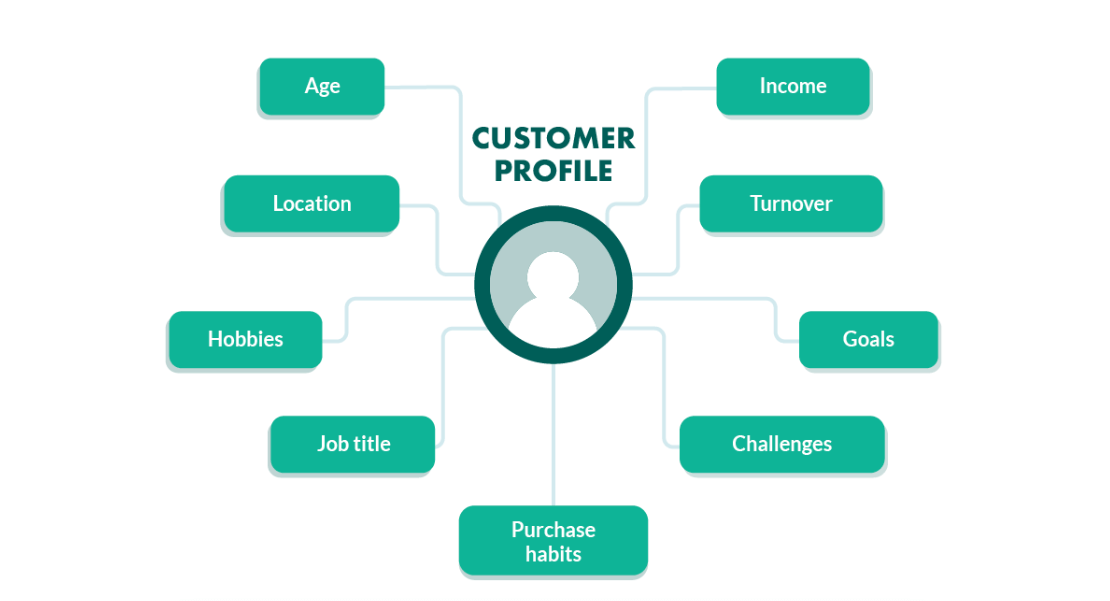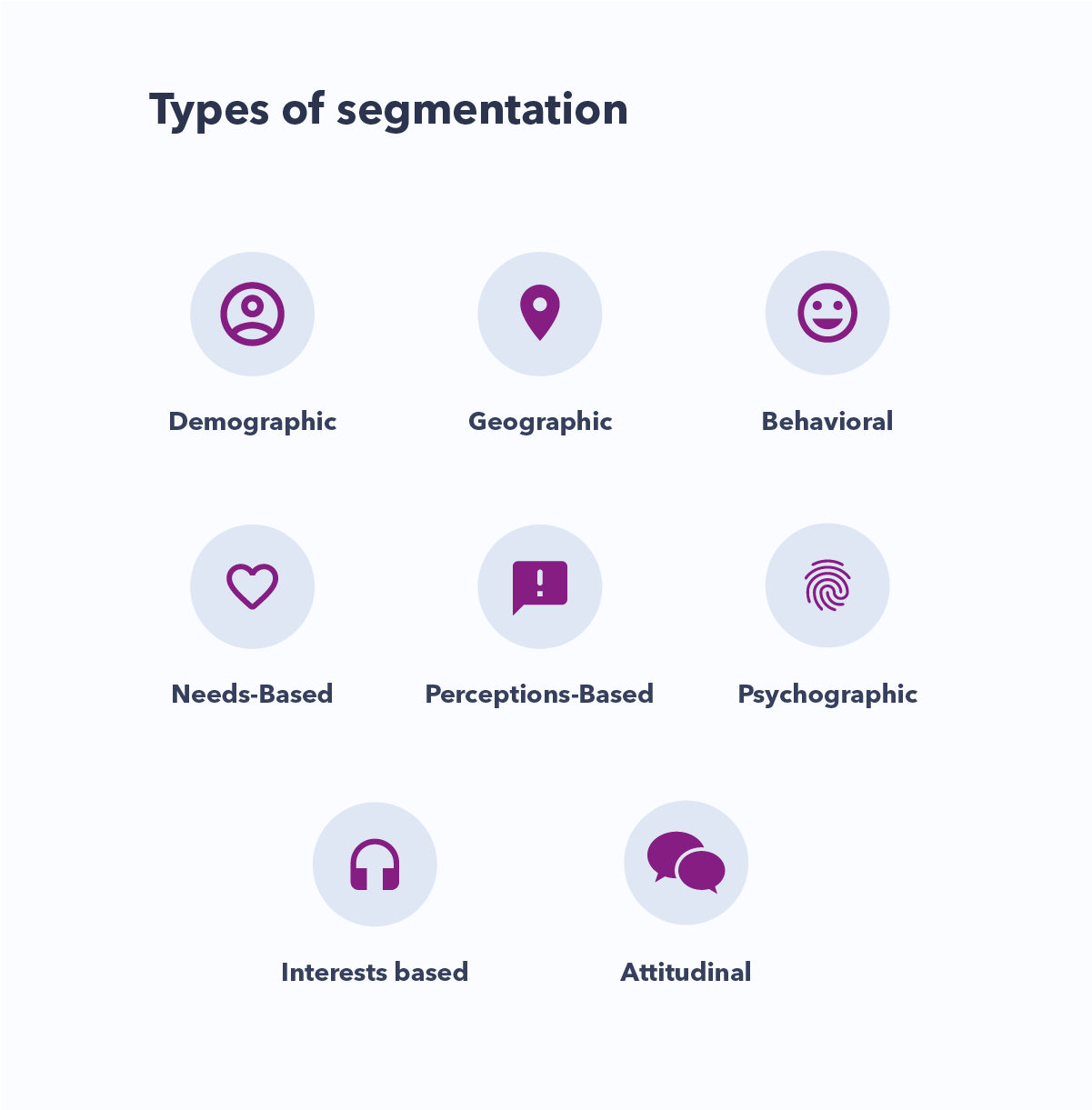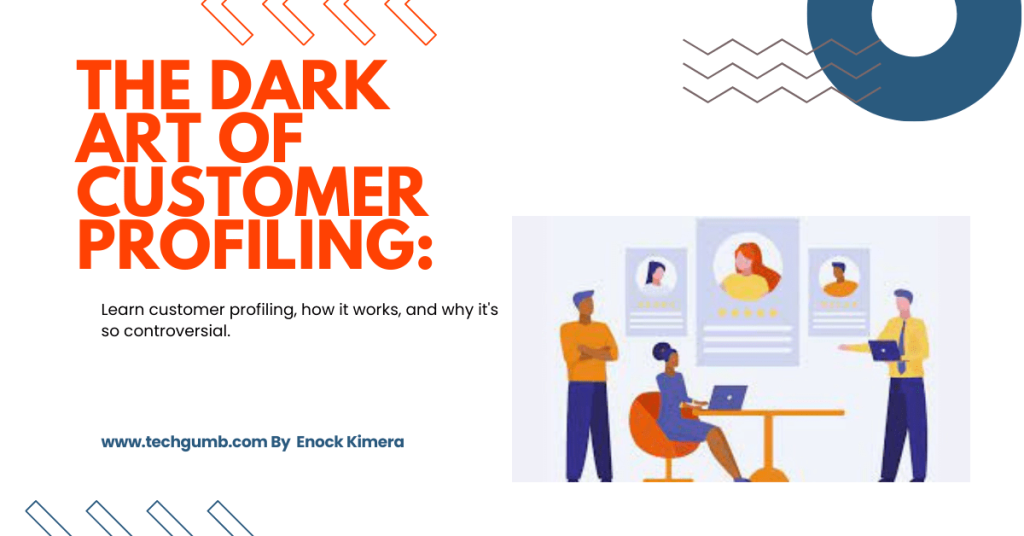Do you judge people by appearance? If so, you’re not alone. In a world where we’re constantly bombarded with advertising and marketing messages, it’s natural to want to group people into categories to understand them better.
There’s a reason why high-end stores are always so busy. It’s not just because they offer great products – it’s also because they know how to profile their customers.
By judging a shopper’s likely income, spending habits, and other characteristics, these stores can better target their marketing efforts and increase sales.
Customer profiling is a controversial practice, but there’s no doubt that it can be effective when used correctly.
In this article, we’ll discuss what customer profiling is, why you should do it, and how to get started. We’ll also give you some tips for using customer profiling data effectively.
What Is Customer Profiling?
Customer profiling is gathering and organizing information about customers into specific groups that share common goals or characteristics.
With customer profiles, you can better target products, services, and communications to appeal to a specific audience.
Identifiers used in customer profiling can include demographics such as age, gender, location, income level, hobbies, preferred social media channels, buying patterns, and psychographics such as lifestyle, values, attitudes, and credit backgrounds.
You can use customer profiles to create relevant messaging, craft personalized marketing campaigns, and attract the target market. Customer profiling also helps you identify customers more likely to purchase their products or services.
Why Should You Do Customer Profiling?
In business, we often discuss the importance of understanding your target market. But what does that mean?
How can you know your target market deeper so you can more effectively sell to them? The answer is customer profiling.
Developing these profiles may seem like much work, but trust me, it’s worth it. Here are four reasons why customer profiling should be a crucial part of your marketing efforts:
Understand Your Customers Better.
The primary benefit of customer profiling is to help you better understand customers. This understanding can lead to improved customer service, more targeted marketing campaigns, and ultimately, more sales.
If you know your ideal customers, you can give them what they want—and that’s something they’ll be willing to pay for.
Targeted Marketing Efforts.
By understanding who your customers are and what they want, you can develop marketing campaigns that are more likely to resonate with them.
This means your marketing dollars will be better spent because you’re targeting the right people with the right message.
And when your marketing efforts are more effective, you’ll see a direct impact on your bottom line.
Improve Products And Services.
Businesses can change their products and services by understanding what customers want to meet their needs – this could involve adding new features or redesigning existing ones.
For example, if you know your target market is people looking for the latest and greatest technology, you could ensure that your product offerings are always up to date.
On the other hand, if you know that price is a major concern for your target market, you could ensure that your products are competitively priced.
Identify New Opportunities.
By understanding the needs and pains of customers, you can develop new products or services that address those needs, like coming up with an entirely new product or simply modifying an existing one.
For example, if your target market is health-conscious but has a sweet tooth, you could create a line of healthy desserts that address both needs.
By identifying new opportunities like this, you can stay ahead of the competition and keep your business growing for years.
There are several good reasons to do customer profiling—but perhaps the best explanation is simply this: it works when done correctly.
How to Create Comprehensive, Data-Driven Customer Profiles.

To create a comprehensive, data-driven customer profile, you need to identify your target audience, collect data, analyze the data, and create customer personas.
You can develop marketing strategies for each persona and monitor and adjust your customer profiles over time. Here is how:
Identify Your Target Audience.
You should consider age, gender, location, and interests when determining whom you want to reach with your product or service.
For example, if you sell children’s toys, your target audience is likely parents or guardians of young children.
Knowing your target audience helps you determine the data you need to collect.
Collect Data About Your Target Audience.
There are various ways you can collect data about your target audience. You can purchase lists of consumers from marketing research firms or gather data from social media platforms.
You can also use surveys or questionnaires to collect data directly from your target audience. Once you have collected the data, you will need to analyze it. (More on this later)
Analyze The Data You Have Collected.
Look for trends and patterns in the data you have collected. Are certain age groups, genders, locations, or Interests more represented than others?
This analysis will help you create customer personas—fictional characters representing your ideal customer to help you develop targeted marketing strategies.
Create Customer Personas.
Once you have analyzed the collected data, you can create customer personas.
Begin by giving each persona a name and create a basic profile that includes information such as age, gender, location, interests, and needs.
If you have collected data from surveys or questionnaires, you can use direct quotes from these Responses to give your persona a voice.
Make sure each persona is based on actual data—don’t just makeup characters that you think would be ideal customers without any evidence to back it up.
Also, keep in mind that each persona should be unique—don’t create multiple personas that are all essentially the same person with different names.
Once you have created your persona (or personas), you can develop marketing strategies tailored to each.
Develop Marketing Strategies for Each Persona.
Now that you have created customer personas, it’s time to start thinking about how best to market to each.
What type of message will resonate with this persona? What channels should you use to reach them? Answering these questions will help you develop targeted marketing campaigns that are likely to reach and convert your ideal customers successfully.
Remember that your personas (and consequently your marketing strategies) may change over time as the needs and wants of your target audiences change.
Monitor these changes and adjust your plans accordingly so your marketing efforts are always relevant and effective.
Test And Refine Your Marketing Strategies.
No matter how well you know your customers, it’s a good idea to test your marketing strategies before rolling them out on a large scale. Start by running small campaigns and then adjust based on the results until you find what works best for each persona.
Monitor And Adjust Over Time.
Finally, remember that customer profiles are not static documents; they should change and evolve as your business grows and your customer’s needs change over time.
Periodically review your customer profiles and adjust as necessary so they always remain accurate representations of your ideal customers.
How To Get Data for Customer Profiling?
You need customer data to create customer profiles. This data helps you better understand customers so you can provide them with the products and services they need and want.
There are several ways to collect customer data, including:
Third-Party Data Providers.
You can collect customer data by purchasing it from third-party data providers.
These providers collect customer data from various sources, such as government records, consumer surveys, credit reports, and product warranty registrations.
The data they collect is then sold to businesses through marketing lists, which they can use to create customer profiles.
Surveys and Questionnaires.
Surveys and questionnaires allow you to collect customer data directly from the source.
They also allow you to engage with customers and get feedback about their products and services.
Additionally, surveys and questionnaires can collect demographic information, such as age, gender, income level, education level, and family size.
Social Media and Other Online Sources.
Social media channels, including Facebook, Twitter, and LinkedIn, are excellent customer data sources for gathering information about customers’ interests, needs, and wants.
Additionally, you can use social media to track customer conversations about your brand or industry.
You can also use several online tools to collect customer data, such as website cookies and web analytics tools.
What Are the Limitations of Customer Profiling?
In today’s data-driven marketing landscape, customer profiling has become an essential tool for businesses large and small, but it has its limitations. Let’s take a deeper look at the limitations:
Limited Use Cases.
While customer profiling can be beneficial in many marketing applications, there are some areas where it needs to be improved.
For example, profiling customers can be used to segment customers for targeted email campaigns or personalize website content. Still, it would be of little use in designing a print ad campaign (unless you were targeting specific customers who had opted in to receive mailers).
Additionally, customer profiling can only be as accurate as the data used to create the profiles; if that data is incomplete or inaccurate, so will the profiles.
Privacy Concerns.
In recent years, consumer privacy has become a significant concern—and rightfully so. In the wake of high-profile data breaches at companies like Equifax and Facebook, consumers have become increasingly wary of giving businesses access to their personal information.
As such, you must tread carefully when it comes to collecting and using consumer data; if they’re not careful, you risk violating consumer trust—and potentially facing hefty fines from regulators.
Relies Too Heavily on Demographics.
Demographics are often used in profiling of customers, but they can only tell you so much about a person.
Age, gender, race, and income are all important factors to consider, but they don’t give you the whole picture.
Limiting if It Doesn’t Consider Customer Behavior.
What do customers do? What do they buy? When do they buy it? How often do they buy it? All these questions can help you create a complete picture of your customer base.
It Can Take Time to Keep Up with Changes.
People’s needs and wants change over time, so updating your customer profiles regularly is essential.
If you don’t, you risk using outdated information to make decisions about your business. This can lead to missed opportunities and lost sales.
Quality Of Data Available.
Creating accurate profiles will only be easy if you have good data. Make sure you are collecting data from reliable sources and that it is updated regularly. Otherwise, you may end up with profiles that are not very useful.
What Is the Difference Between Customer Segmentation and Profiling?
In its simplest form, customer segmentation divides your customer base into groups based on shared characteristics.
Segmenting your customers allows you to understand better their needs and how to serve them best. It also allows you to allocate your resources more efficiently by focusing on the most valuable segments to your business.
The most common approach is to segment them based on demographic characteristics such as age, gender, income, and more.
However, you can also segment customers based on their behavior (e.g., how often they purchase, what products they purchase) or their psycho-graphic characteristics (e.g., lifestyle, values, attitude).
The key is choosing the most sensible segmentation approach for your business that will allow you to target your marketing efforts better.
For example, if you sell women’s clothing, segments based on age and income might make more sense than those based on behavior or psychographics.
Types of Customer Segments.
There are four main customer segments:

Image source: GWI
Demographic Segments:
These segments are based on observable characteristics such as age, gender, income, and education level. Demographics are relatively easy to identify and measure.
Psychographic Segments:
These segments are based on psychological factors such as lifestyle, values, and attitudes. Psychographic segments are more difficult to identify and measure than demographic segments.
Behavioral Segments:
These are based on a customer’s past behavior, such as purchase history, frequency of purchases, etc. Behavioral segments are relatively easy to identify but can be challenging to measure.
Customer Needs Segments:
These segments are based on a customer’s specific needs and how your service or product can meet those needs.
Customer needs are perhaps the most important type of segment because they allow you to focus on solving a specific problem for a specific group of people.
Choosing the Right Customer Segmentation Approach.
As we mentioned earlier, there is no one-size-fits-all approach to customer segmentation. The key is to choose the approach (or combination of approaches) that is most sensible for your business and will allow you to target your marketing efforts better. To help you decide which approach is right, ask yourself the following questions:
- What product or service am I selling?
- Who is my target market?
- What information do I need to market my product or service effectively?
- How much time and resources do I have available for this project?
As a business owner or marketing manager, it’s essential to understand the concept of customer segmentation and how you can leverage it to improve your marketing efforts.
Tips For Creating an Accurate Customer Profile.
Creating an accurate customer profile is key to understanding customer behavior and developing customer-centric products or services that meet customer expectations.
With the tips below, you’ll be well on creating a customer profile that accurately reflects customer needs and wants.
Know Your Customer Base:
Take the time to research, survey, and interview your customer base to understand who they are, what they need and want and their motivations. This is the only way to create an accurate customer profile effectively.
Define Your Target Market:
Knowing whom you are targeting is essential. Whom do you want to reach and why? Define your customer base and identify their characteristics, behaviors, values, and lifestyle.
Create Buyer Persona:
Develop customer profiles using the data from your customer base research. Create fictional characters representing each customer type to help you better understand how to engage with and meet customer needs.
Identify Their Needs and Wants:
Consider what your customer is looking for in your products or services and understand how they differ from other customer groups. Knowing their needs will help you create a customer profile that accurately meets their requirements.
Understand Their Motivation:
What motivates your customer? Are they looking for a solution to a problem, the convenience of an easy-to-use product, or something completely different?
Knowing what motivates your customers will help you create profiles that better meet their demands.
Keep It Up to Date:
Update customer profiles constantly with the latest customer insights to ensure your customer profile is accurate and reflects customer trends, preferences, and needs.
Wrap-up.
Customer profiling can be invaluable for businesses—but only when used correctly. When creating customer profiles, you must respect consumer privacy concerns and limit the use of sensitive data; if not, they risk damaging their relationships with their customers—and their bottom line.

